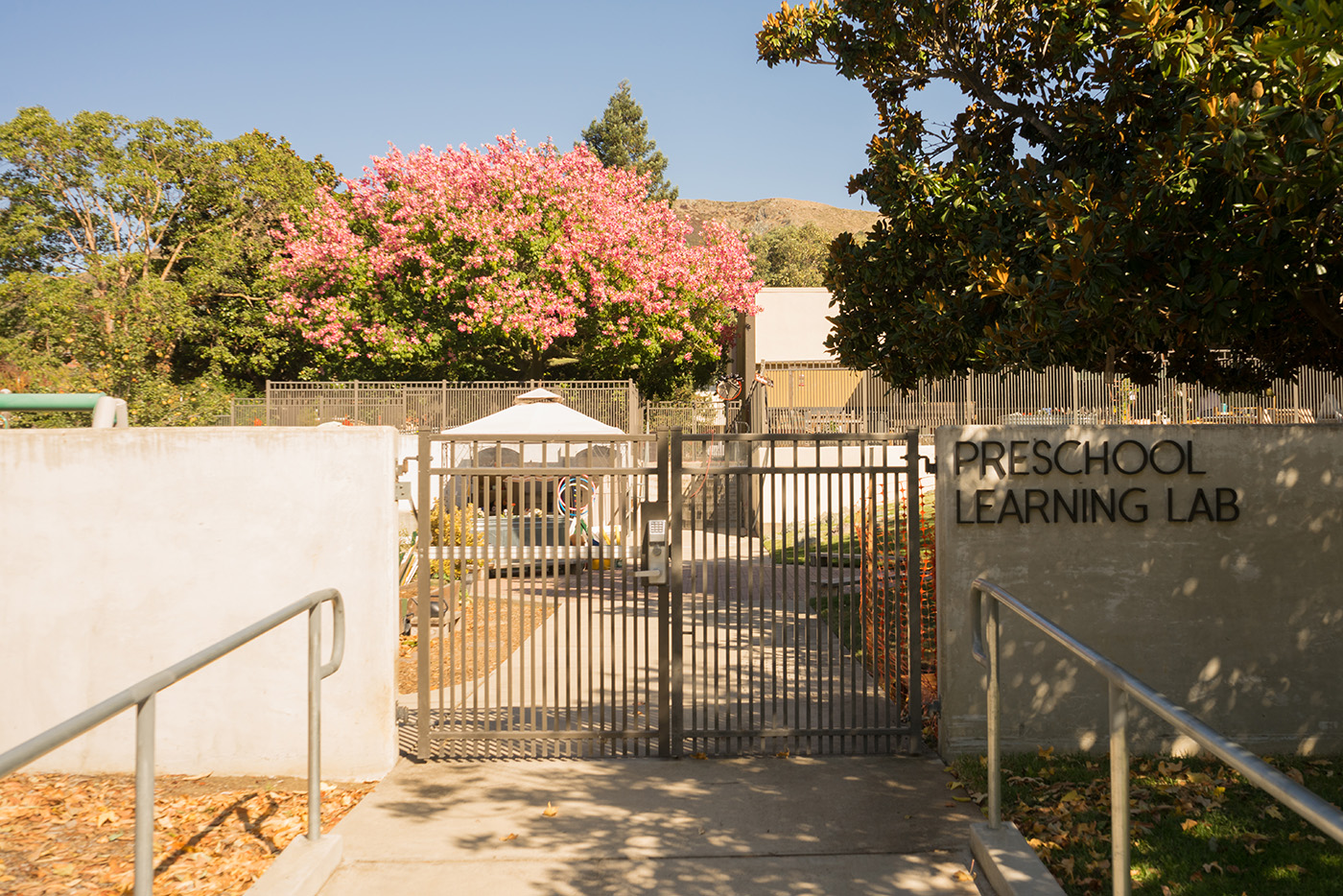Cal Poly is more than a place of learning for college-aged students and adults. Even preschoolers come to this campus to learn.
At the Preschool Learning Lab, located in the Math and Science building, Patty Clarkson curates a learning experience where both Cal Poly students and preschool-aged children can learn in an environment that supports a natural learning process.
“A focal point of the Preschool Learning Lab curriculum is to offer innovative inquiry-based learning experiences that support children’s natural interest and engagement in science, technology, engineering, and mathematics (STEM),” the Preschool Learning Lab’s website reads.
Not only do children come to the preschool lab for exemplary education, but child development students are given a hands on experience.
“[Students] enrich their understandings of children’s development, early childhood educational practices, and the integration of research, theory and practice under the guidance of a highly qualified and experienced teaching team,” Clarkson wrote in an email to Mustang News.
Child development sophomore Kaitlin Tabor said students learn about different approaches to education in the lab.
“We look at the constructivist approach when working with children,” Tabor said. “We have a whole checklist of things that a constructivist classroom should look like and we have to develop an action plan of how we’re going to implement that in a classroom. So whether that be helping kids learn how to do problem solving, experience empathy and cooperation or increasing their vocabulary in terms of STEM, we have to come up with a plan of how we’re going to naturally implement that in a classroom.”
Learning how to take early education theories and implement them is especially useful to students pursuing careers in a classroom setting like child development senior Zoe Phipps who said she hopes to be a special education teacher.
“It’s definitely made me more confident in what I think I know about child development,” Phipps said. “It’s one thing to learn about how preschoolers learn or how kids learn and their curiosity and even impulse control, but to see it and to work with it hands-on for an entire quarter really solidifies what I’ve been learning.”
Phipps said her experience in the preschool lab taught her how to be flexible.
“Learning to be accepting and understanding of kids whether they have a disability or really anything, to be ready to work with that and work with the parents and what they expect from you … was one of the biggest takeaways I had from that class,” Phipps said.
Child Development senior Skyler Gin said child development students are intentionally building their interactions with the children through experiences the kids are interested in and at their own developmental level. The students have to observe the children over-time, learning what interests them to effectively facilitate growth.
“The learning isn’t structured, it’s more so based on what the children want to learn in the lab, in the environment and how that affects them,” Gin said.
Clarkson said the natural learning process used at the preschool lab goes hand in hand with STEM because it supports risk taking, creativity and inquiry-based questions.
“If we’re teaching kids to be curious, to ask questions to wonder about the world and to see things with the lens of ‘I want to know more about that, I don’t know about that now, but I will eventually learn about that soon,’ that’s when they develop the growth mindset, that you will learn more, you can learn more, that there are no limits on what you can learn,” child development sophomore Kaitlin Tabor said. “I think that’s why it’s important at a very young age to start teaching them about being curious because then they’re not going to be afraid to ask questions and put in that effort when they’re older.”
The Preschool Lab class is about learning on all levels, whether that be the Cal Poly students learning from the children, the children learning from the students, or the students learning from the faculty.
“This is a reciprocal process … children and college students learn from each other,” Clarkson said. “College students learn how to ask effective open-ended questions to promote critical thinking and understanding of concepts, much like their own learning is facilitated in this class.”
The learning that occurs in this class can extend beyond the classroom as well. Children have a vastly different outlook on life than adults do, having not had the same amount of experience with life as adults have. The children in the lab have provided the students and faculty who work with them valuable personal takeaways.
“My favorite thing about working with kids is their childlike wonder and that’s why I love working with them because as we grow up and as we get older we tend to take things in the world for granted,” Tabor said. “It really reminds me to be young again and to see things with new and fresh wonder of just how beautiful this life and this world is.”

